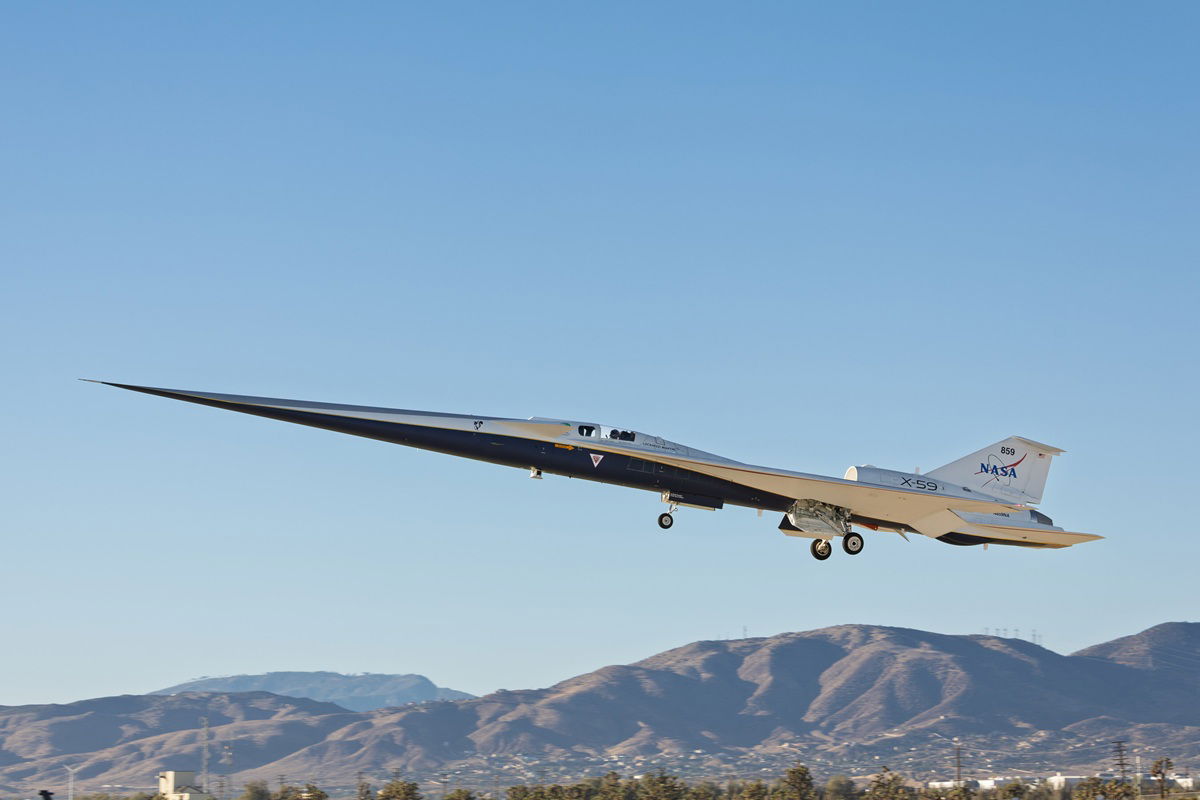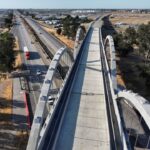NASA’s X-59 begins its first test flight, ushering in a new era of silent supersonic flight. Credit: Lockheed Martin
For the first time in more than 20 years, the sound barrier has been broken again – this time almost silently.
NASA’s sophisticated X-59 experimental jet has completed its first-ever flight, reigniting hopes of reviving supersonic passenger travel without the deafening roar that once shattered dreams.
The aircraft, developed in conjunction with Lockheed Martin’s Skunk Works division, took off from Palmdale, California, for a brief but symbolic test. It’s the first glimpse of what NASA has been working on since 2016: a plane that could once again travel at high speeds without the lightning that made Concorde so controversial.
A quiet answer to Concorde’s thunder
When Concorde took to the skies in the 1980s and ’90s, flying from London to New York in less than four hours defined the future of travel. But that progress came at a cost. It’s a 110 decibel sonic boom that can shake buildings and shake nerves. That noise ultimately led to restrictions on supersonic flight over land and helped determine Concorde’s fate after its last flight in 2003.
More than 20 years later, NASA is looking forward to the X-59 QueSST, or X-59 for short. Quiet supersonic technology – It is possible to succeed even if Concorde fails. The goal is to reduce that noise to just 75 decibels, about the same sound as a car door closing.
During its first flight, the aircraft remained well below its future cruising speed of Mach 1.4 (about 1,485 km/h), cruising gently at about 385 km/h (385 km/h) to test its systems and controls. The next stage of testing will take place at NASA’s Armstrong Flight Research Center near Edwards Air Force Base, where the jet will eventually attempt to reach supersonic speeds.
A jet designed to silence the skies
At first glance, the X-59 looks like something out of a science fiction movie. The long, pointed nose takes up almost a third of the plane’s fuselage and is specifically designed to diffuse shock waves and dampen the sonic boom that typically occurs when a plane breaks through a sound barrier.
It is also one of the few airplanes in history where the pilot cannot see directly ahead. Instead of a traditional cockpit window, the X-59 uses a 4K external vision system consisting of a high-resolution camera that projects a live view of what’s ahead.
The aircraft is powered by a General Electric F414-GE-100 engine, the same type used in modern fighter jets, but this engine is located at the top of the aircraft rather than at the bottom. This design keeps the underside smooth and reduces noise. Other parts are borrowed from various military aircraft, a practical way to reduce costs and speed up development.
A new era of quiet speed
NASA’s next challenge isn’t just technical, it’s also psychological. The agency plans to fly the X-59 over parts of the United States and ask residents to describe what they hear. If it’s quiet enough, regulators could finally lift a ban on supersonic flight over land that has been in place for more than half a century.
That could open the door to a new generation of high-speed commercial aircraft that could fly passengers around the world in record time without inconveniencing people on the ground.
“The X-59 is a symbol of innovation and determination. It shows what happens when you push limits. It’s not just faster, it’s smarter and quieter,” said NASA Acting Administrator Sean Duffy after the successful flight.
It’s been more than 20 years since the world said goodbye to Concorde. Now that NASA’s X-59 is flying, that goodbye may not be forever after all.








